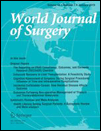The Cost of Intramedullary Nailing Versus Skeletal Traction for Treatment of Femoral Shaft Fractures in Malawi: A Prospective Economic Analysis
Abstract
Background
In many low- and middle-income countries, non-surgical management of femoral shaft fractures using skeletal traction is common because intramedullary (IM) nailing is perceived to be expensive. This study assessed the cost of IM nailing and skeletal traction for treatment of femoral shaft fractures in Malawi.
Methods
We used micro-costing methods to quantify the costs associated with IM nailing and skeletal traction. Adult patients who sustained an isolated closed femur shaft fracture and managed at Queen Elizabeth Central Hospital in Malawi were followed from admission to discharge. Resource utilization and time data were collected through direct observation. Costs were quantified for procedures and ward personnel, medications, investigations, surgical implants, disposable supplies, procedures instruments and overhead.
Results
We followed 38 nailing and 27 traction patients admitted between April 2016 and November 2017. Nailing patient’s average length of stay (LOS) was 36.35 days (SD 21.19), compared to 61 (SD 18.16) for traction (p = 0.0003). The total cost per patient was $596.97 ($168.81) for nailing and $678.02 (SD $144.25) for traction (p = 0.02). Major cost drivers were ward personnel and overhead; both are directly proportional to LOS. Converting patients from traction to nailing is cost-saving up to day 23 post-admission.
Conclusion
Savings from IM nailing as compared with skeletal traction were achieved by shortened LOS. Although this study did not assess the effectiveness of either intervention, the literature suggests that traction carries a higher rate of complications than nailing. Investment in IM nailing capacity may yield substantial net savings to health systems, as well as improved clinical outcomes.




